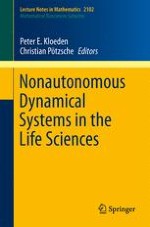2013 | OriginalPaper | Buchkapitel
4. Stimulus-Response Reliability of Biological Networks
verfasst von : Kevin K. Lin
Erschienen in: Nonautonomous Dynamical Systems in the Life Sciences
Aktivieren Sie unsere intelligente Suche, um passende Fachinhalte oder Patente zu finden.
Wählen Sie Textabschnitte aus um mit Künstlicher Intelligenz passenden Patente zu finden. powered by
Markieren Sie Textabschnitte, um KI-gestützt weitere passende Inhalte zu finden. powered by
